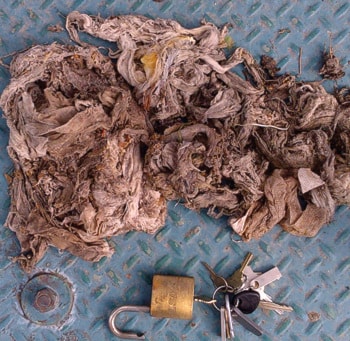People are flushing thousands of tax dollars down the toilet when they put disposable wipes into the sewer system, say local government officials who are trying to sort out the mess.
The wipes, like those meant to clean babies’ bottoms or replace toilet paper, are clogging up municipal sewers, resulting in costly clean-outs, said Liisa Bloomfield, an engineer with the Regional District of Okanagan-Similkameen.
“The problem is even though (manufacturers) say they’re flushable, they don’t break down as fast as regular toilet paper. That’s the biggest thing,” she explained.
The RDOS only encountered the issue when it commissioned its first-ever sewage treatment plant earlier this year in Okanagan Falls. The system is fed by three lift stations that pump wastewater from homes to the facility.
During the height of the summer tourist season, RDOS staff visited each lift station a few times per week to do a clean-out, Bloomfield said, which took two workers a couple of hours to complete. So the cost, although not tallied, adds up quickly.
“It’s a lot of work and not a pleasant job,” she said, adding other items like dental floss, feminine products, condoms and plastic bags should all be disposed of in the trash.
Penticton city engineer Ian Chapman confirmed the problem extends to his community and most others.
“We get all the materials mentioned by the regional district, and we get a bunch of other stuff as well. We get building materials, we get clothing. It’s unbelievable what gets flushed,” Chapman said.
Disposable wipes, he continued, are a relatively new consumer product and nuisance, and create mats of debris that float atop the wastewater in lift stations, requiring workers to remove them “anywhere from once a month to once every few months.”
Chapman estimated the labour cost at “probably a few thousand” dollars annually.
“The bigger risk is if we don’t spend our time doing that, we could end up with major equipment damage, which is running into the tens of thousands of dollars,” he added.
Eric Bruner, a spokesman for Kimberly-Clark, which manufactures a variety of wipes in Canada under brand names such as Cottonelle and Scott, noted it’s important for consumers to distinguish between products that are not meant to be flushed and those that are, which he said are clearly marked as such.
And in response to concerns raised by local governments like those in the South Okanagan, Kimberly-Clark has posted a Youtube video showing its disposable wipes being put through a series of tests meant to prove they break down as promised.
“Our products are very clearly safe to flush,” Bruner said. “We’ve put a lot of testing behind our flushable cleansing cloths, and if we say they’re safe to flush, we stand behind that commitment.”
Bloomfield said real-world conditions are much different than those in a laboratory.
“Yes, if you leave them long enough they probably will break down,” she allowed, “but there just isn’t enough time from when it leaves somebody’s house to when it gets to the lift stations in the sewer system.”
